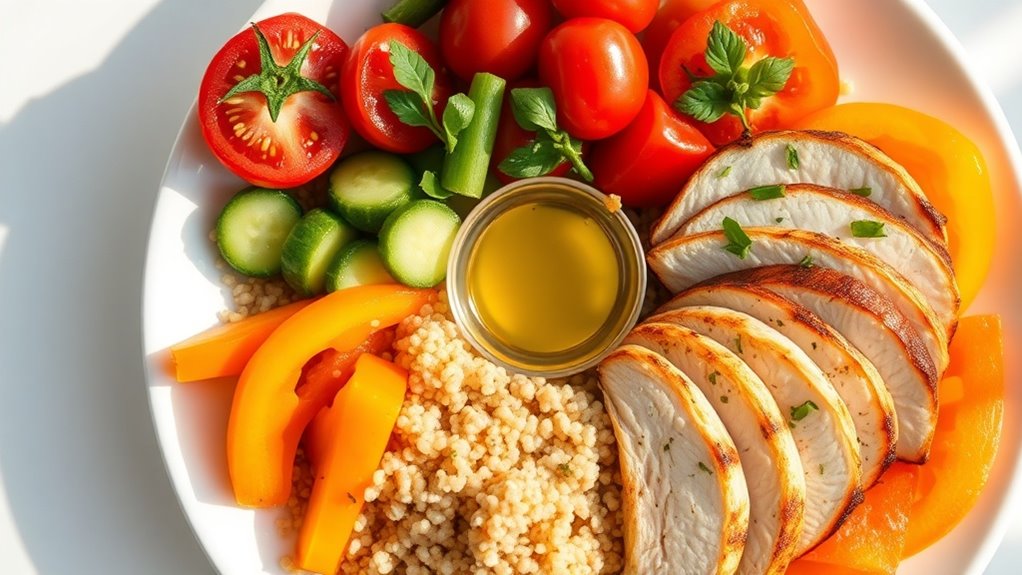Build a Better Plate- The Simple Visual Guide to Smarter Eating
Most people underestimate the power of visual cues in influencing their eating habits. By using a simple half-plate rule, you can easily create balanced meals that promote better health. This guide shows you how to fill your plate wisely, ensuring that you get a variety of nutrients without overthinking portion sizes. Understanding these concepts can significantly impact your dietary choices and overall well-being, but there’s much more to explore on how to implement them effectively.
Understanding Portion Sizes
Although you may think you know what a proper portion looks like, understanding portion sizes is crucial for healthier eating habits.
When meal planning, use tools like measuring cups or a food scale to accurately gauge servings.
Portion sizes directly influence calorie intake, ensuring you enjoy balanced meals without overeating.
Mastering this skill helps you make smarter choices and maintain a healthier lifestyle. Mindful eating practices enhance awareness of food intake and satisfaction.
The Importance of Food Groups
Understanding portion sizes lays the foundation for balancing your diet, but recognizing the importance of food groups takes your nutrition to the next level.
Each food group—grains, vegetables, fruits, proteins, and dairy—provides unique nutrients essential for your body. A diverse intake supports overall health, boosts immunity, and reduces disease risk. Incorporating foods rich in vitamin C is particularly beneficial for enhancing your immune response.
Make sure to incorporate a variety of these groups daily for optimal nutrition.
Building a Balanced Plate
Creating a balanced plate is essential for maintaining a healthy diet, and it can be as simple as following the half-plate rule. Fill half your plate with vegetables and fruits for essential nutrients. Use one-quarter for whole grains, and the remaining quarter for lean proteins. This strategy not only enhances your meals but also ensures you get a variety of important food groups. Incorporating a range of colors in your fruits and vegetables can further boost the nutritional value of your meals.
Visualizing Your Meal
How do you envision your meals can make a significant difference in your eating habits?
By clearly visualizing your plate, you can create a balanced meal that includes a variety of food groups.
Consider using visual cues, like using smaller plates for portion control.
This practice not only enhances satisfaction but also reinforces healthier choices, promoting better nutritional habits over time. Additionally, incorporating fiber-rich ingredients into your meals can further enhance satiety and support overall wellness.
Tips for Smart Eating Choices
Visualizing your meals sets the stage for making smart eating choices that support your health goals.
Focus on nutrient-dense foods, like fruits, vegetables, and whole grains. Limit processed snacks and sugary drinks.
Plan your meals ahead to avoid impulse decisions. Incorporate variety to ensure balanced nutrition. Replacing sugary drinks with water can significantly reduce excess calories and enhance hydration.




